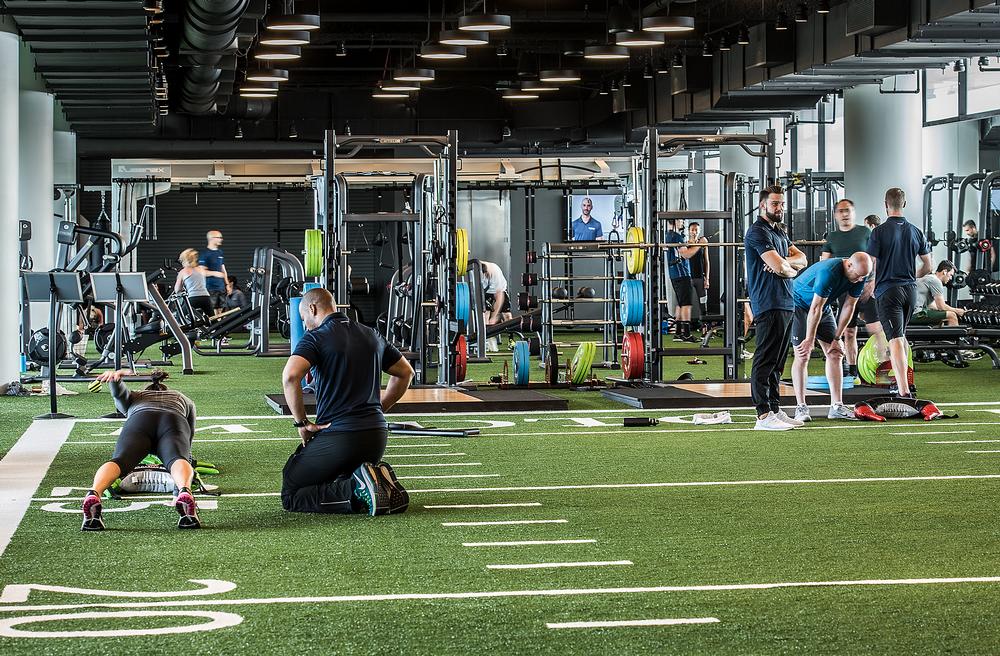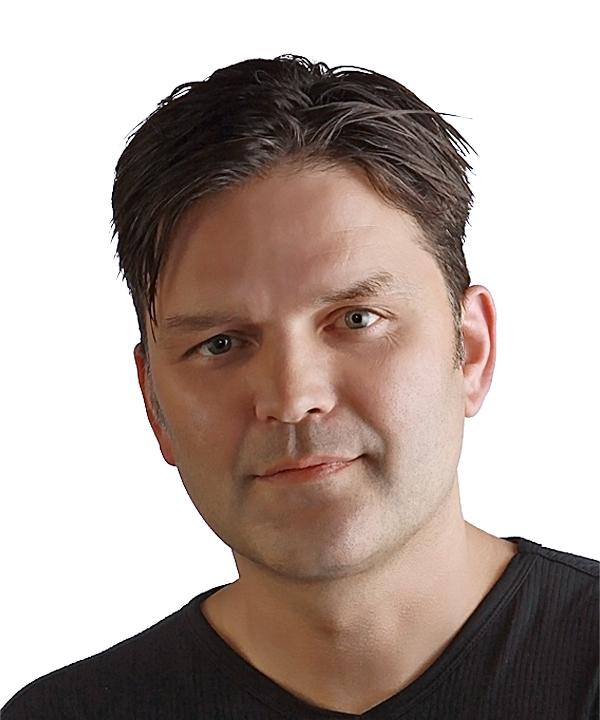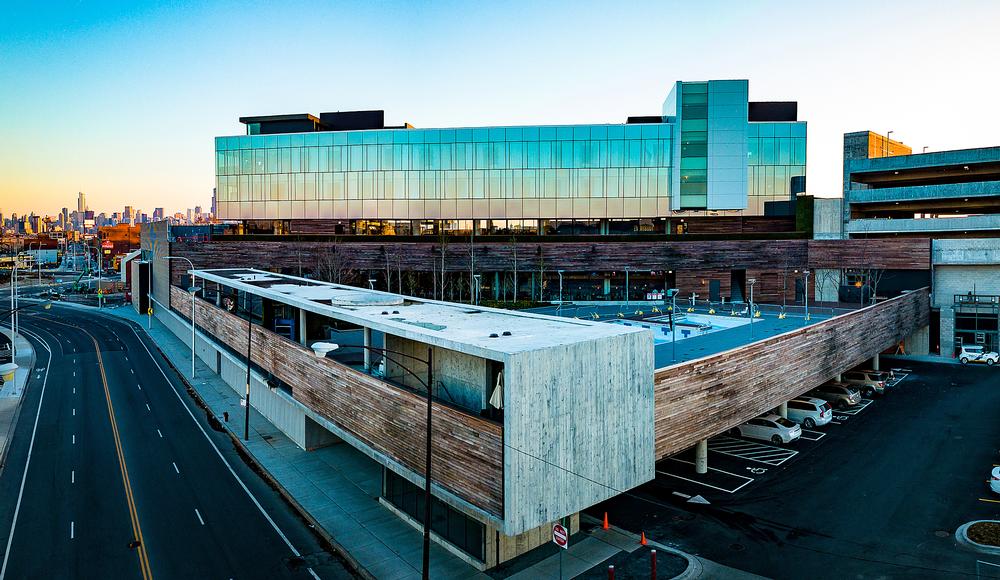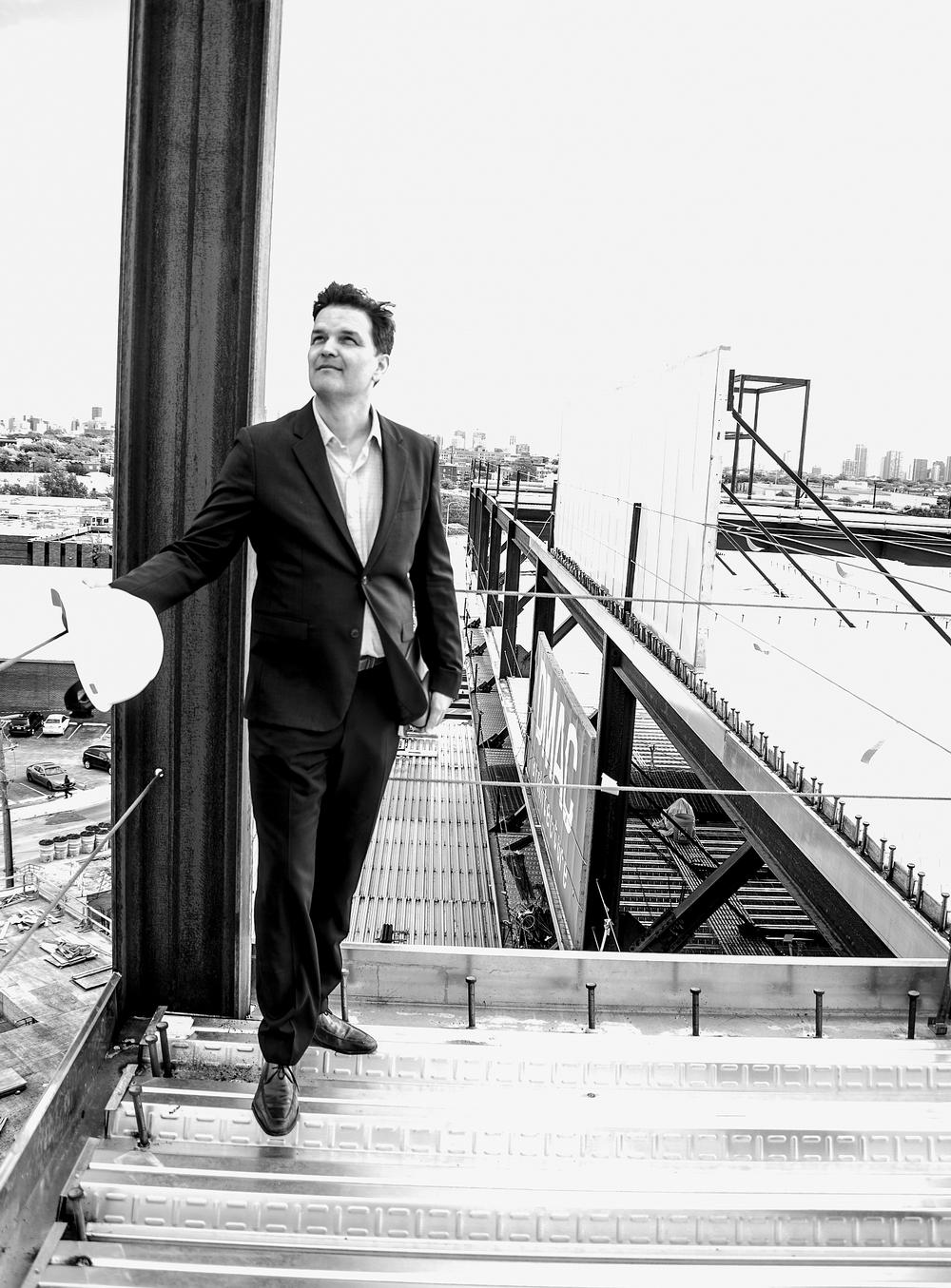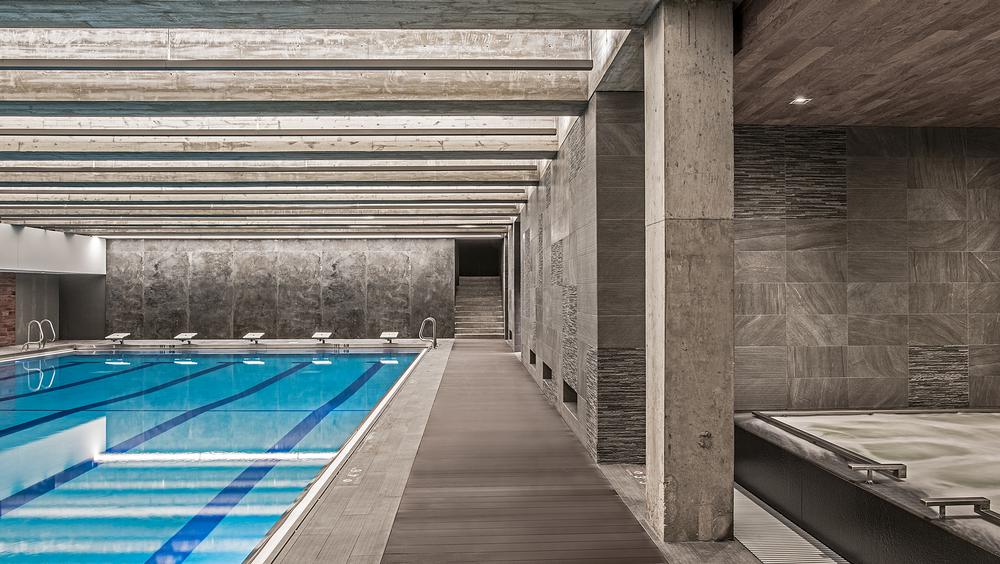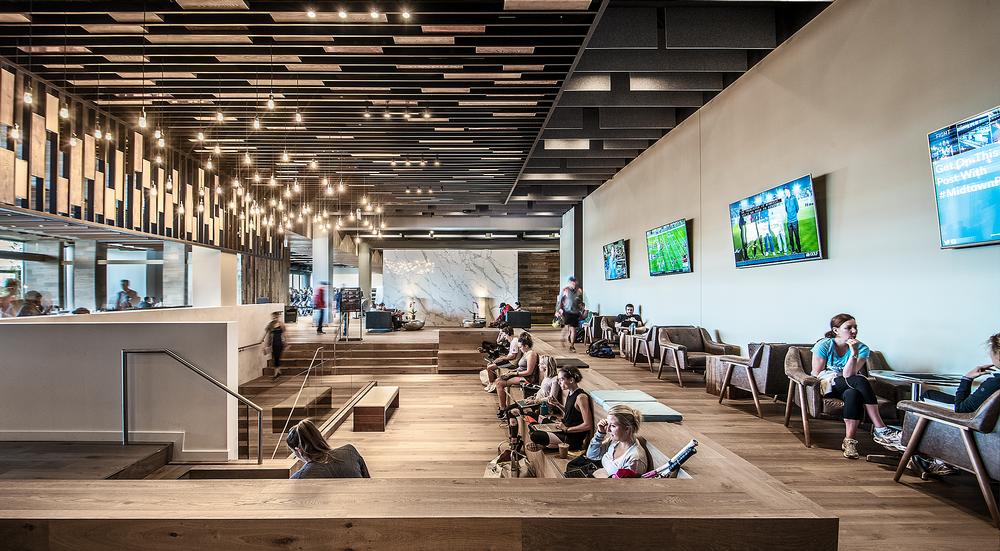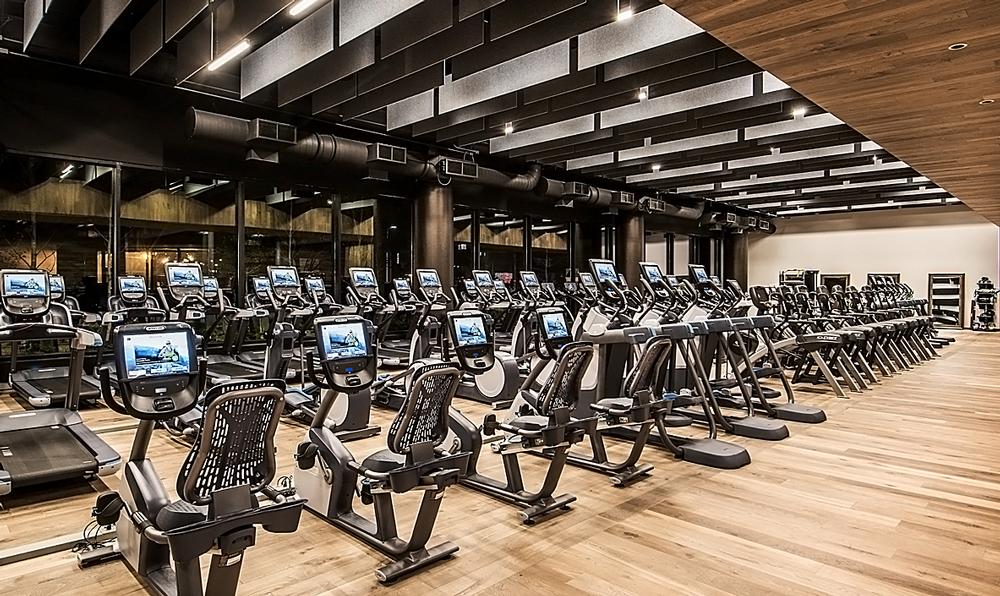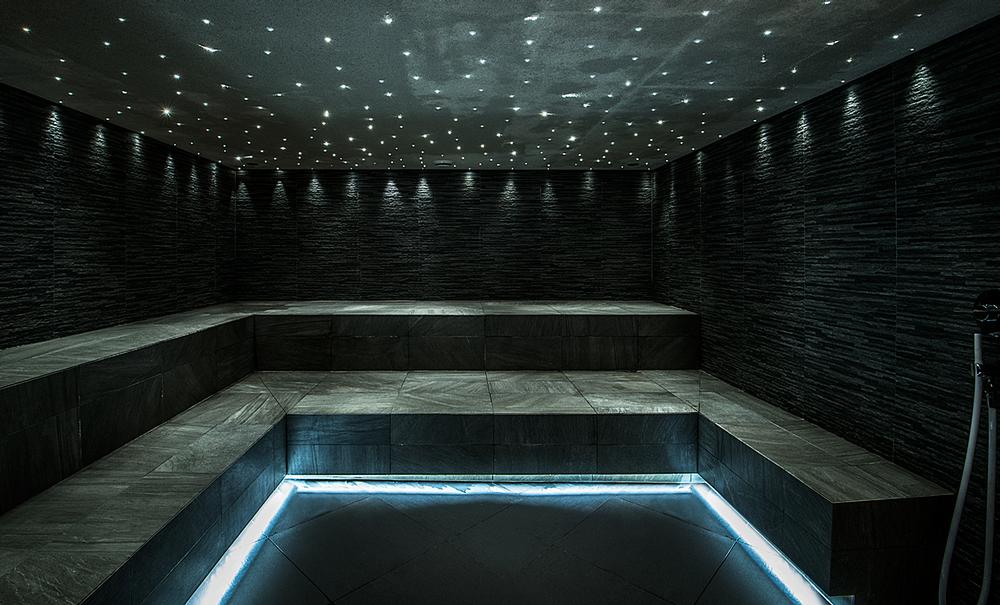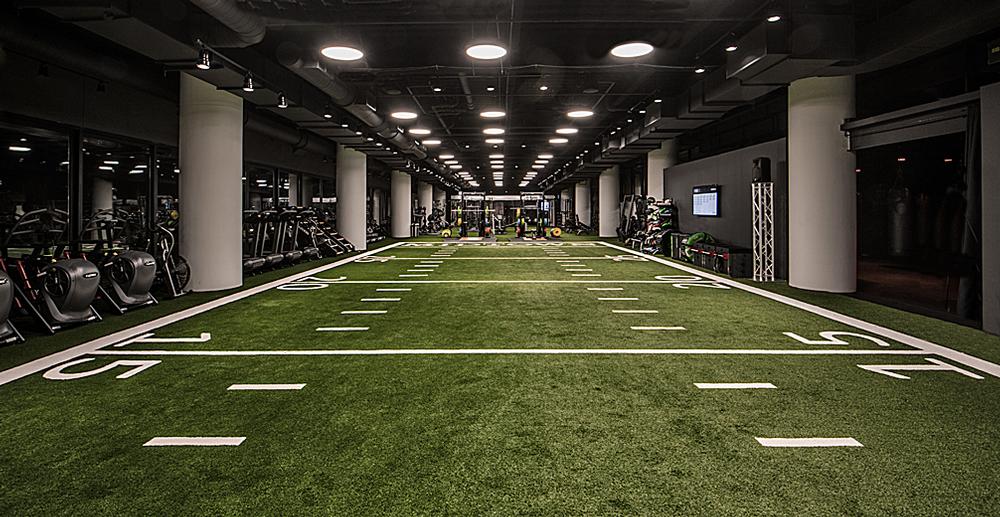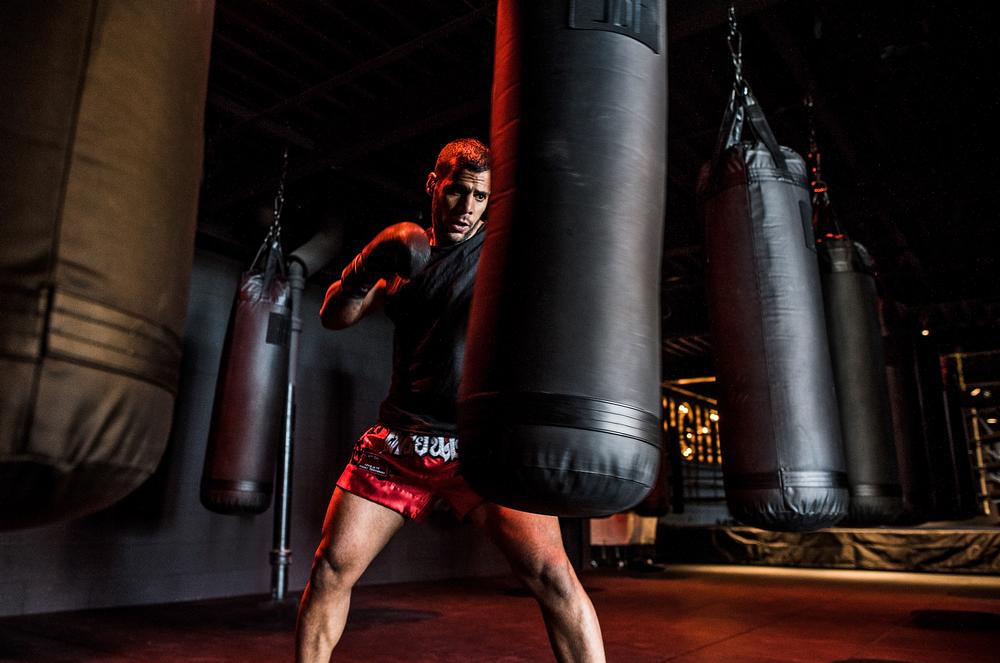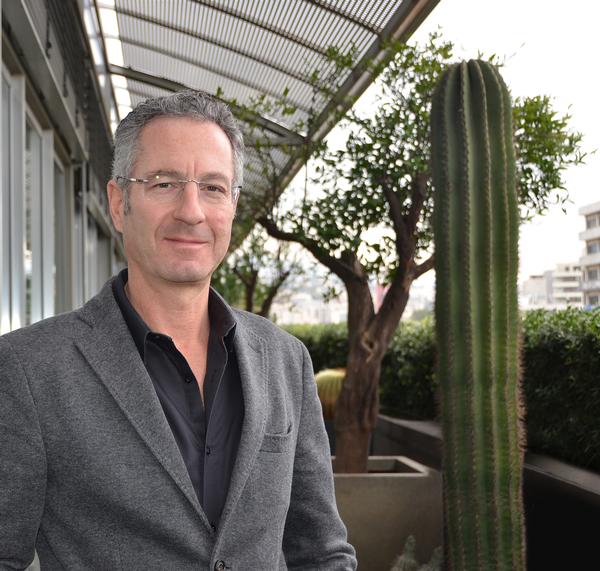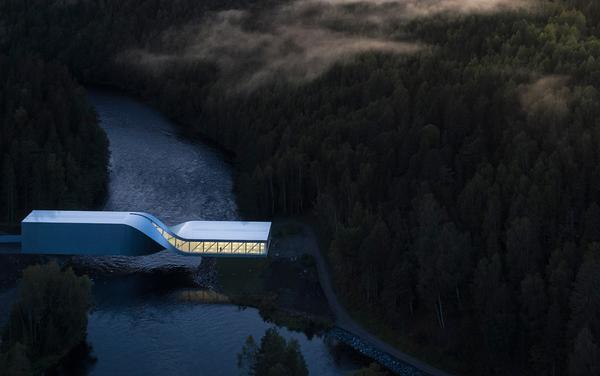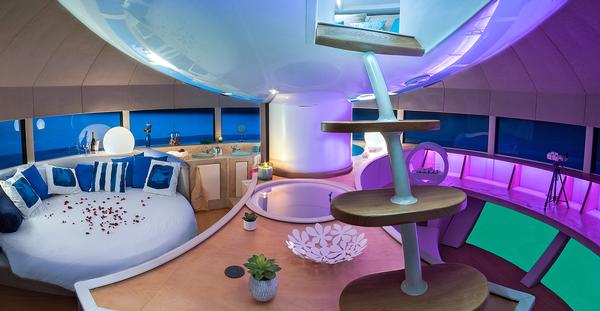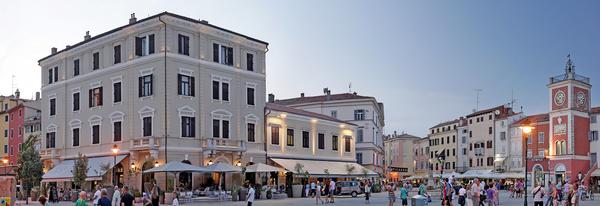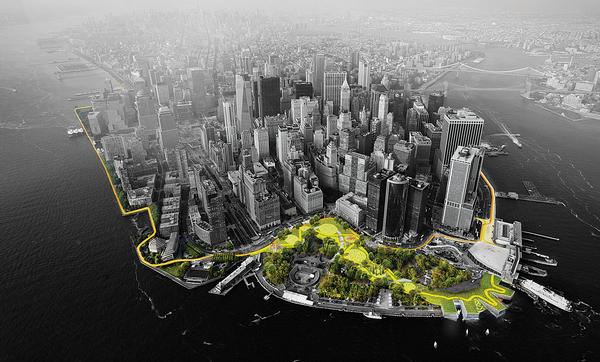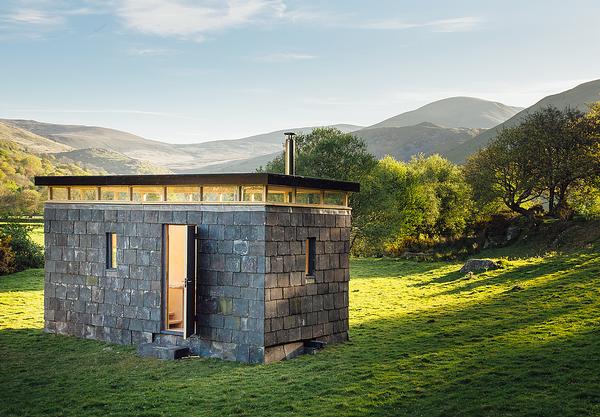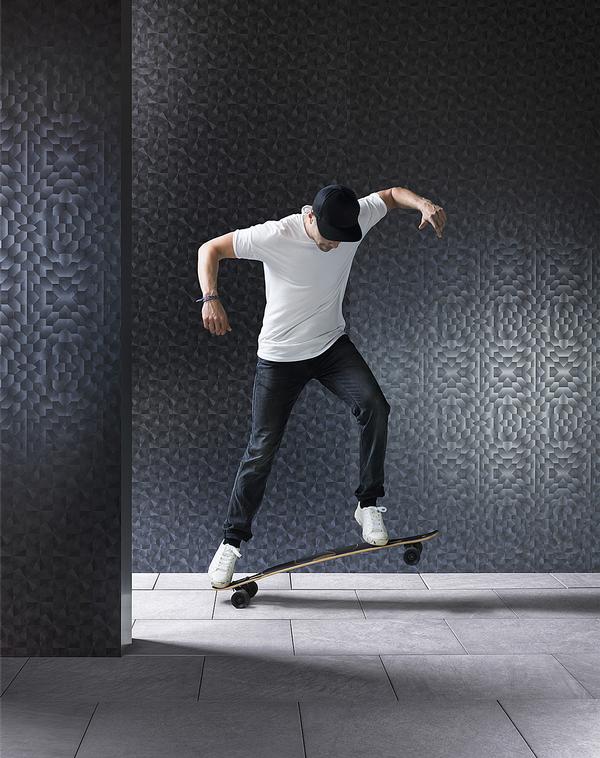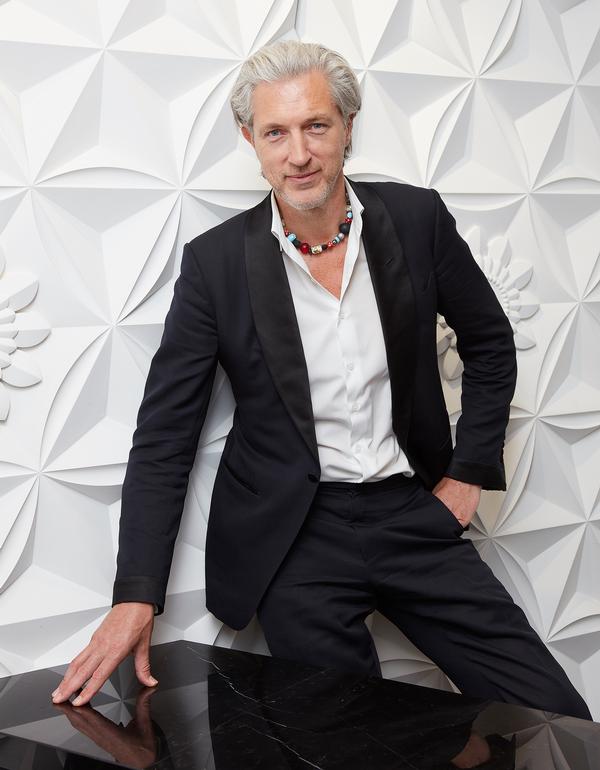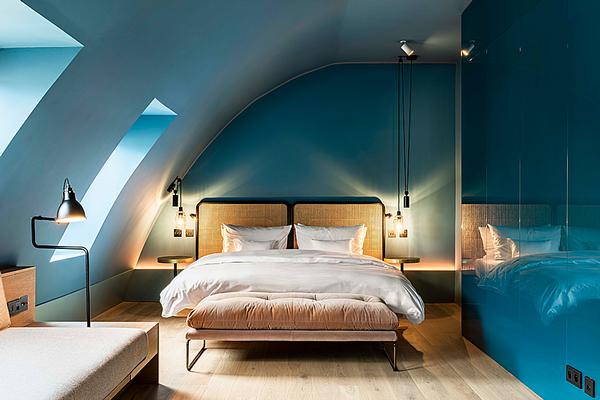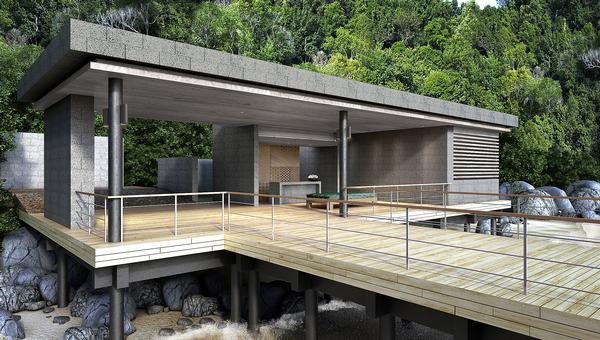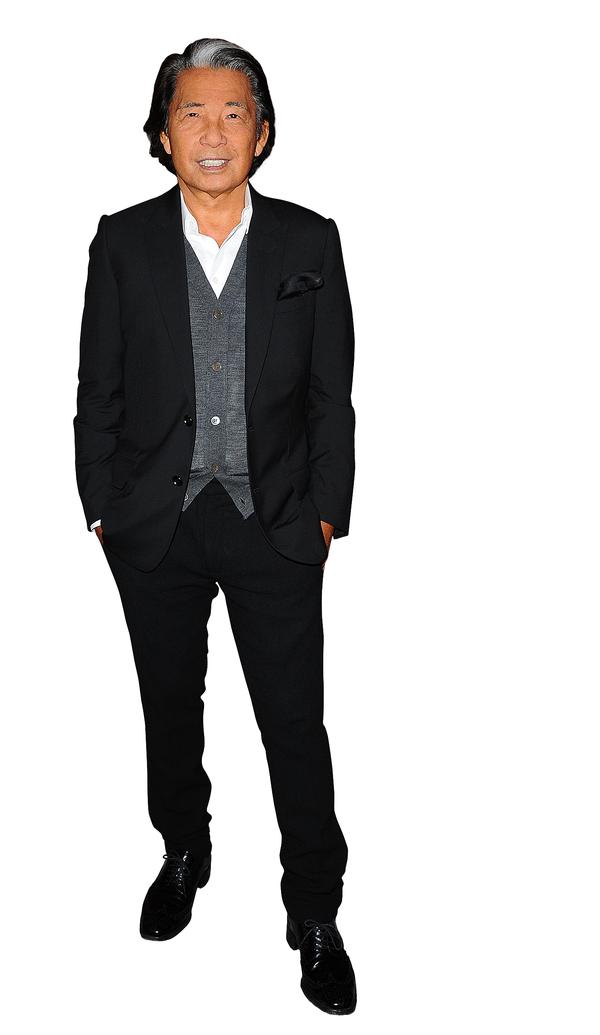Mixed use
Fit for anything
Chicago’s Midtown Athletic Club has reopened, following a renovation that sees the iconic tennis centre relaunched as a premium athletic club with a fitness-focused hotel, spaces designed by Venus Williams and a pool that becomes an ice rink during the winter. DMAC’s Dwayne MacEwen talks Magali Robathan through the project
Opened in 1970 by tennis enthusiast Alan Schwartz and his father Kevie Schwartz, Chicago’s Midtown Tennis Club (as it was originally called) quickly built a name for itself within the sport. From 1983 to 2002, it was the home court of Billie Jean King, Andre Agassiz won his first national junior tournament there, and John McEnroe won his first national championship at the club.
While the club offered excellent tennis facilities, the gym was a small add on, and Midtown Athletic Club decided changing times meant it was time to diversify. Chicago architectural and interiors practice DMAC Architecture were brought on board, and the team started working on a major $85m renovation and expansion project with the aim of turning the tennis club into ‘the largest premier health-and-fitness property in the US’.
Located off Midtown’s industrial corridor, it was important for the client and the designers to create a ‘human scale facility in a big box retailer area’ and to create a place for local residents to socialise as well as to work out in.
The club now features 16 indoor tennis courts; studios for a range of activities including yoga, pilates, cycling and boxing; an indoor pool; an outdoor pool, which serves as an ice rink during the winter; a fitness centre; a full service spa; a restaurant; a retail complex; and a two storey 55 room boutique hotel.
The hotel wasn’t part of the original renovation plans. Just as construction was about to start, Midtown president CEO Steven Schwartz reportedly had a ‘lightbulb moment’, realising that the neighbourhood had a dearth of decent places to stay, and that they could create a hotel where the fitness facilities were absolutely central, rather than being an add on.
“The hotel concept came late in the game, but it was an inspired idea,” says Dwayne MacEwen, founder of DMAC Architecture. “Differing from your typical hotel facility where a small portion of the property is dedicated to amenities, Midtown is 96 percent amenity and only four percent hotel.”
DMAC proposed putting the two storey hotel on top of the gym, and quickly set about altering the design plans.
The hotel appears as a floating volume, with a glass-covered exterior. Inside, it features contemporary design with extensive use of glass, granite and wood, and one of the four suites is designed by Venus Williams, who played on Midtown’s courts as a junior tennis player.
Here DMAC’s Dwayne MacEwen talks us through the highs and lows of the challenging project
What makes this project unique?
The Midtown Athletic Club is composed of several typologies bundled into one massive building.
There’s the health club component that, within itself, encompasses several typologies, a fitness centre being just one of them. It also features individual studios including yoga, pilates, group fitness and cycling; as well as a restaurant, indoor and outdoor pools, a full-service salon/spa, an outdoor workout area, a boxing rink, and golf simulator area. As well as the health club, there’s also a 55-room hotel and conference centre. The health club occupies the first three floors and the hotel is housed on the fourth and fifth floors.
How did this fit with the existing facility?
All of this is nested adjacent to the original 87,000 square foot brick structure that houses 14 tennis courts, built in 1970. The two structures are physically connected by the Tennis Lounge, which blurs the boundaries between old and new. The new development is built around and above the electrical room that is the linchpin of the original tennis courts.
Midtown Athletic Club is a new urban hub that exemplifies the trend of the decentralisation of Chicago, exploring the new wave of high quality hospitality offerings popping up beyond Chicago’s core downtown. Smart cities now need to include mixed-use sites in the neighbourhoods that improve the livability of cities, such as the neighbourhood housing Midtown – once considered an industrial district.
The intersection of Damen, Elston and Fullerton was formerly underutilised, and the new design sought to revitalise the intersection by creating a campus. We have not only created a project in itself with integrity but have activated the site and the neighbourhood in the sense of place making.
Can you sum up the aims of the project?
We aimed to make sure there was an emotional connection as the user moved through the space. We wanted to create a collection of functions and programs, versus a collection of programmatic elements, similar to Chicago’s collection of neighbourhoods. Architecturally, the ultimate goal was to create a sense of space, to unify the various programs of the club into a seamless, cohesive whole, while providing a distinct identity for each of these programs.
We sought for the new design to be an interface between the club and its members. Working closely with the client, we built a new brand, with architecture serving as a medium to exercise this brand building – engaging guests, and also paving the path to expanding this brand to other Midtown clubs.
What have been the biggest challenges of working on this project?
The project was originally designed to be a two-and-a-half storey building to accommodate the health club. We were ‘design complete’, both architecturally and structurally, when we decided to add an additional two floors to accommodate the hotel, in collaboration with the client. A programmatic change like this coming late in the project posed a challenge, requiring modifications to the structural design and circulation, with minimal changes to the already designed health club.
We welcomed the challenge with open arms, as it greatly ignited the design possibilities. We stayed agile as the design evolved, resulting in what we consider to be a very successful outcome.
The geometry of the site of the club posed another challenge for us – it is flanked by three streets creating a triangular footprint. This influenced the design; we leveraged the shape to create a one-of-a-kind property.
How did the location inform the design?
The new design for the club had a very site-specific outcome that was defined by the triangular shape of the site. The challenging geometry of the site somewhat defined the footprint of the building, which the design emphasises.
While the original ‘Elston Corridor’ was predominantly industrial, there was a need for more sophisticated mixed-use developments in the area, improving the liveability around the intersection. Midtown is ideally situated, on the cusp of three vibrant neighbourhoods (Lincoln Park, Bucktown and Logan Square), and the aesthetics of the club addresses the needs of the demography.
What have been the highest and lowest points?
The highest and lowest point was a specific moment in the design process – the point when we were nearing the start of construction. The client asked if we could put a hotel on top of the parking garage, and after rethinking the design, it made the most sense to build the hotel on top of the health club. Since we’d already spent so much time on the nearly three-storey project, if we were to add a hotel, it became problematic that we couldn’t put it on top of the parking garage without having to completely reconstruct the existing structure.
Although we ‘d already started construction, once we were able to redesign parts of the existing club and add on the top three storeys, the low point actually became the high point. Now, we can’t imagine the athletic club without The Hotel at Midtown.
Why did the athletic club need to be revamped? What state was it in?
The old clubhouse was a small, two-storey structure that was next to the tennis courts, all built in 1970. Midtown Building II was across the street on Elston, and housed additional tennis courts and a small fitness centre. The club functions were bifurcated with tennis on one side of Elston, and the fitness portion across the street (where the revamp took place).
Midtown’s intention was to upgrade their fitness programming and brand the facility as an athletic club, instead of just a tennis club. This was timely, as it coincided with the city’s plans to re-route Elston Avenue, which essentially cut through the fitness club, dislocating the fitness centre for two years, until the new club opened.
We transformed Midtown from the largest tennis club in the country, to the largest fitness facility. The club had its glory days in the 1970s and 1980s, and the fitness component was purely an add-on to the tennis clubs. It was still relevant but needed to be brought up to date.
What were the biggest challenges of creating the hotel?
The hotel concept came late in the game, but it was an inspired idea.
The challenge was to modify the structural design and the circulation with minimal changes to the already-designed health club.
We had to change the structural framing concept from the originally designed concrete structure with spread footings to a steel structure with caisson foundations. We also had to work with the constraints of column spans while maintaining efficiency with the hotel rooms, which had to be worked into the club areas on the lower floors. We were able to accommodate that with cantilevers and diagonal bracing, expressing them architecturally as a floating mass above the club floors.
The facility turns the idea of the hotel gym on its head, with the hotel part of a larger fitness facility. What does it offer that most hotels don’t?
For loyal hotel guests, the fitness club offers a community built around shared values of fitness and the opportunity for group activities. It also offers the opportunity for one-time guests to the hotel to mix and mingle with local Chicagoans in a neighbourhood setting.
The athletic club allows guests to prioritise fitness, not only within their own regimen or training program, but within business and leisure travel. The site becomes a reason in itself for travel to Chicago (to be a spectator or to participate in competitions and tournaments). As spas and wellness centres of the late 20th-early 21st century become conceptually and physically dated, Midtown Athletic Club presents a new vision for a wellness-driven trip.
Was the hotel designed with fitness-focused guests in mind? If so, how did this manifest itself in the design?
There are many hotels that cater to fitness-minded travellers, but at Midtown, the hotel is the amenity. Differing from your typical hotel facility where a small portion of the property is dedicated to amenities, Midtown is 96 percent amenity and only four percent hotel. This is a complete game changer for both the hotel and club experience.
In many ways, the hotel was designed with the health-conscious/fitness-focused guest in mind. Rather than offering in-room yoga mats like many hotels do, we offer guests the best yoga studio and fitness classes in the country, as well as state-of-the-art equipment and all the exciting amenities offered at the club. All guest rooms are well appointed, offering a wow-moment on every floor.
The design choreographs movement throughout the spaces. Each space is distinct, accommodating different approaches to exercise, fitness and even relaxation. The club also offers other amenities such as the café and spa and other gathering places that support fitness beyond exercise itself.
How would you sum up the hotel design? And how would you sum up the athletic club revamp?
The new hotel is a dramatic, floating volume inspired by international modernism, but with forms, textures and materials that offer a sense of welcome and comfort for guests with contemporary, healthy lifestyles.
The athletic club is a contemporary, elegant flow of varied but related spaces that nod to the storied history of the tennis club while inviting new, diverse approaches to fitness.
What is your favourite part of the building?
My favourite part of the club is the outdoor pool that transforms into an ice rink come winter.
DMAC Architecture
DMAC is a full-service architecture firm based in Evanston, IL, specialising in hospitality projects. Founded in 1995 by Dwayne MacEwen, past clients include Midtown Athletic Club, Michael Jordan’s Steak House, Lamborghini, Doc B’s Fresh Kitchen, Rivers Casino and Resort, Mario Tricoci Hair Salon & Day Spa, and Lamborghini Gold Coast.
According to the firm, ‘DMAC is known for its extensive knowledge of current fabrication methods, designing and developing interior elements in addition to traditional architecture.’
Venus Williams and Midtown Athletic Club
Venus and Serena Williams have had a long relationship with Midtown Athletic Club, having competed there as junior tennis stars. In 2002, Venus Williams launched her interior design practice, V Starr Interiors, and when Midtown Athletic Clubs CEO and president Steven Schwartz decided to renovate the club, he was keen to get her on board.
“It’s been special to follow Venus’ career as an international tennis icon, and more recently, as she launched V Starr,” said Schwartz. “Midtown Athletic Club and The Hotel at Midtown has been a dream of ours for more than a decade, and giving Venus and her team the opportunity to leave their mark on our dream project was really fortunate.”
V Starr Interiors designed the Tennis Lounge at Midtown Athletic Club and the V Suite for the Hotel at Midtown.
The Tennis Lounge features an electric yellow and green colour scheme, teal seating, and a feature wall composed of tennis balls. The V Suite has been designed as a ‘calm, rejuvenating space’ and features a living area ‘composed of sultry, soothing tones complemented by pure whites in the bedroom.’
“I’ve always respected the Midtown Athletic Club, and it was meaningful to work with them in a new capacity, combining my passion for tennis with design and hospitality,” said Williams. “V Starr’s design reflects the timeless sophistication of Midtown’s beloved establishment, while drawing from my own experiences.”
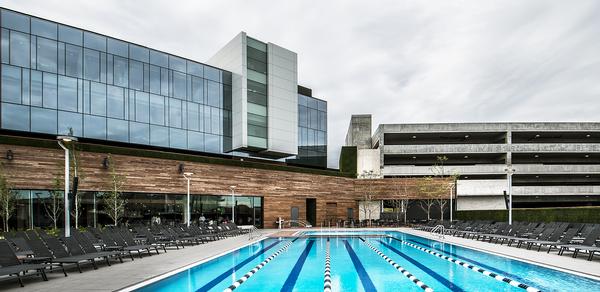
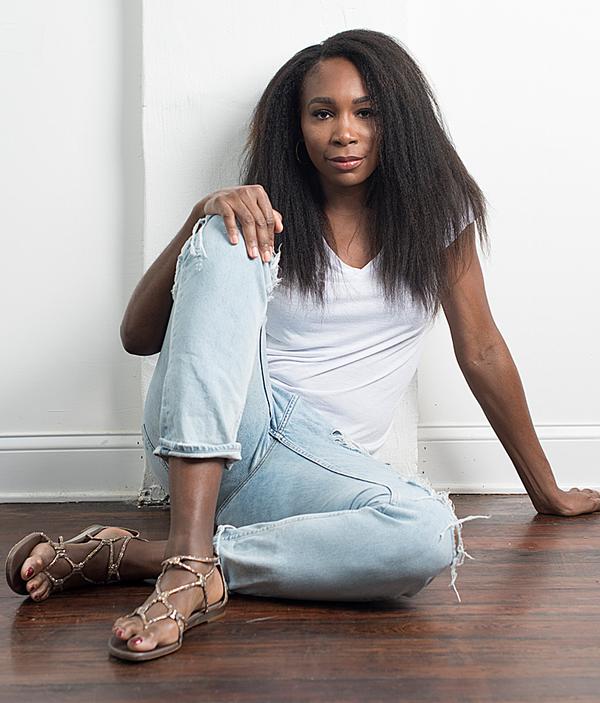
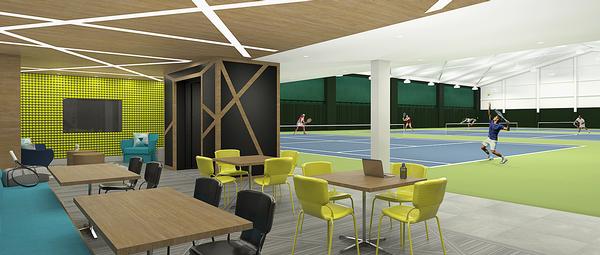
Midtown Athletic Club facilities
• Outdoor pool deck with athletic pool, hydrotherapy pool and kids’ pool, which are converted to an ice skating rink in the winter
• Full-service restaurant with outdoor dining, private dining, and a lounge
• Rooftop sundeck
• 9,700 square foot weight training floor
• 16 indoor tennis courts
• Full-service spa
• Hot yoga studio
• Spin studio
• Pilates studio
• Boxing studio
• Group exercise studio, ‘The Theater’
• Cardio fitness floor
• Two golf simulators
• 55 room hotel

